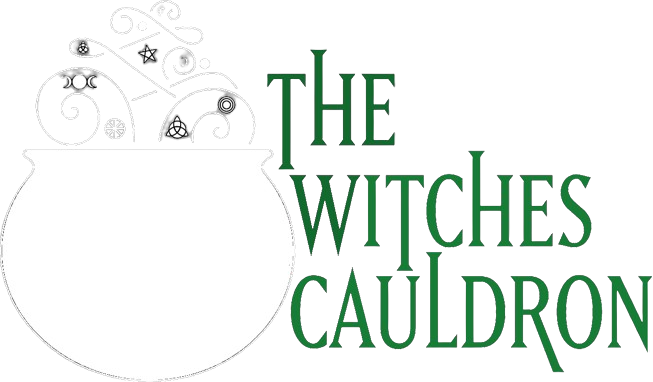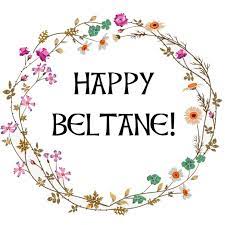The pentacle is a five point form which is shown in a variety of different ways. Agrippa says its use was to “fore-know all future things, & command whole nature, have power over devils, and Angels, and do miracles.”Pentacles are meant to preserve us from evil, assist us in our magickal workings, drive away evil spirits, or constrain and eradicate them, allure good spirits and compel them to take our command. It is often hung around the neck giving the practitioner authority, although in some magickal systems the pentacle is kept hidden under a cloth, then unleashed and used as a magickal weapon. Pentagrams can be used combined with other symbols to create sigils, seals, amulets and talismans. The Pagan practitioner can use an athame to sign a pentacle in the air to either invoke or banish energies in respect to elemental associations. It is frequently placed over doors, windows and fire places to ward. On a witches alter the pentacle serves to bring spirit to Earth. On a Wiccan alter it also represents the three aspects of the Goddess and the two aspects of the God.
Pentacles are often made from silver, brass, wood or slate, but in more dangerous times it would have been made from wax or dough. It is usually placed at the centre of the Pagan alter and resonates universal energy associated with Akasha, corresponding with the fifth element of spirit. The pentacle corresponds with the Earth element, and is Aleister Crowley’s belief that because Earth contains all elements, the pentacle must represent earth. Another argument is that the alter on which the pentacle sits is placed at magnetic North, which is associated with earth as an element because of the axial rotation, which is responsible for the seasons. However some Pagans wish to associate the pentacle solely with spirit, and the cauldron containing salt with earth. The coins in the tarot are often depicted as pentacles (some people credit Elphas Levi with this). They also correspond to the earth element and represent divinity manifesting in matter.
New Paganism defines the pentacle as being encircled, whilst the pentagram is not. The circle represents the God and Goddess, unity and wholeness. Within Paganism the five points represent the four directions the fifth being spirit. The qualities and properties of the elements are also represented; as are the seasons plus terror time (unnamed and unnumbered days between the years), and the quarters of the moon plus the new moon. This is said to of been a Pythagorean idea and one perpetuate by Agrippa. To Pagans and people of other faiths the wearing of a pentacle signals the ruling of the higher consciousness of the mind over the body and physical matter. The pentacle represents man within the microcosm, within a greater macrocosmic universe. It bears resemblance to a man with his arms and legs outstretched; the images Robert Fludd and Leonardo da Vinci show this geometric relationship between man and the universe, and the five-fold division of the body. To the Chinese it represents material aspects and their generative and destructive phases. They are: fire, earth, metal, water and wood. To the Babylonians it depicted angles and direction. The five points of pentacles are attributed with Jung’s four fundamental psychological functions: feeling, thinking, intuition, sensation, but also the transcendent self. It could also be a marker for the stages of a person’s life: child, youth, maturity, old age and death. Fivefold symbolism is everywhere; there are five senses and five vowels.
At some point within the medieval era, the pentagram or endless knot as it was known, symbolized summer with one point up and winter with one point down. The symbol has been used by knights to represent the five virtues of generosity, courtesy, chastity, chivalry and piety. In Egypt it was the symbol of the “underground womb” and it thought to be linked with the concept of the pyramid form. In India, the pentagram represents the elements of the five lower chakras of kundalini yoga. In the act of the Wiccan kiss the feet, knees, womb, heart and lips are places on the body attributed to points of the pentacle. The pentagram represents the five visible planets and the moon at the centre point. According to Pythagoras each point represents fire, water, air, earth, and psyche; energy, fluid, breath, matter, and mind; liquid, gas, solid, plasma and aethyr, or spirit. In the Jewish Kabbalistic tradition the pentagram represents the five upper sephiroth on The Tree of Life, which represent the forces of justice mercy, wisdom, understanding and transcendent splendor. It was once associated with the five wounds of Christ and worn as an amulet by early Christians. Other Christians associated it with the five senses: sight, hearing, smell, taste and touch. Until the Christian inquisition, it was a symbol of truth, as it was to the Hebrews who knew it as the Pentateuch.
Pythagoras was a Greek mathematician and philosopher; he considered the pentagram an emblem of mathematic perfection because of its geometry. In Ancient Greece it was known as “The Pentalpha”, being composed of five interlaced A’s or Alphas. Pythagoreans held the pentacle sacred to the Greek Goddess Hygeia, the goddess of health. Agrippa writes that in Greek her name is an anagram for the elements, which together comprised all matter. The pentacle is also associated with the Greek Goddess Kore, sometimes known as the vegetation Goddess Persephone. She is also connected with the Roman Ceres, possibly an early form of the Goddess Demeter representing the virgin, or they are two faces of the same Goddess. Kore’s (which means maiden or young girl) symbol was the apple; used today in Pagan rites it is cut crossways to reveal the seeds at the core, which make up the five pointed star. Pythagoras was said not to eat them because of this pentemychos “five recesses” or “five chambers inside. The apple is also a sacred fruit because it is a symbol of health; which relates back to Hygeia. Although most Pagans will know that the pomegranate is the associated fruit of Persephone, the word comes from the Latin “apple” and “seeded”. In religious stories the apple is considered a forbidden fruit because of the hidden knowledge which was forbidden to human kind.
Pythagorean followers established a brotherhood, they followed the philosophical, religious and political teachings of Pythagoras; they followed this system in search of a purer way of living. But enemies attacked their assembly and they were forced underground. The pentacle was worn by the Pythagoreans so that they could recognise each other; just as it is worn by Pagans today for the same reason. Many schools of thought are descendants of Pythagorean systems. This can be seen in the architectural work of the ancient stone masons, and the beliefs of the Freemasons today. This sacred geometry was built into cathedrals and other religious and revered structures. The ancient Pythagorean pentagram was drawn with two points up. However in the 19th century an influential writer called Elphis Levi, elaborating on earlier claims, called the reversed pentagram evil, and said it would attract sinister forces because it demonstrates the triumph of matter over spirit. The Pagans plight today to be accepted in society as a founding religion, bearer of divine wisdom and arcane knowledge, is continually brought down by the media. Negative connotations are reinforced by satanic cults and other who use the pentacle two points up as their emblem. They are not Pagans, yet they are all tarred with the same brush. In some magickal systems, such as the Gardnerian, the pentacle two points up is given to a second degree initiate. However many have since substituted this with a triangle, is this because of the stigma?
It is said that during the inquisitions Christians accused the Knights Templar of worshiping Baphomet; an image linked to the pentacle, but some disagree and dismiss it as a fanciful notion. Most Pagans are acquainted with the famous depiction of Baphomet by Elphas Levi. This image supposedly became a Sigel of the Masons; though it was anti – masons and Christians wishing to demonise it which tied Baphomet to the fraternity. Some say that Baphomet is an imagined Pagan deity, with links to the Ancient Egyptian ram God. In Medieval times other horned Gods such as Pan were equated with the Christian devil, and the use of the pentagram became evil. The inverted pentagram is considered a sign of black magick, and even some modern day Pagans see it as such. The pentacle is many things to many people; it is utilized by different belief systems and is arguably the most powerful symbol of protection a Pagan can have. Many times it has been bought because it looks “cool”, and is worn simply as an ornament. Sold everywhere from Pagan and New Age shops to market stalls, it is a common symbol everyone knows. It would be hopeful to presume it is known for the right reasons, rather than being condemned by the uneducated.
Beth Champion


